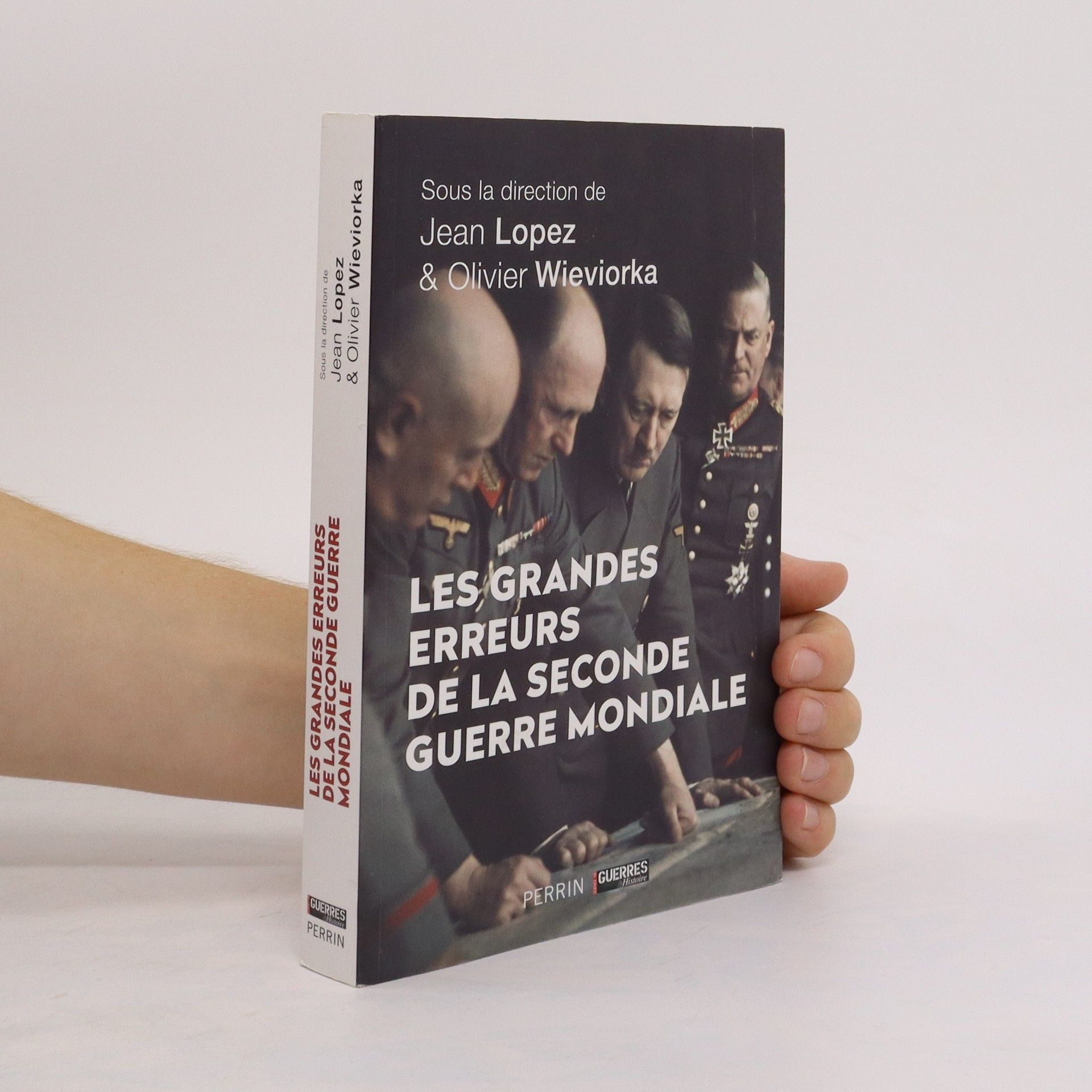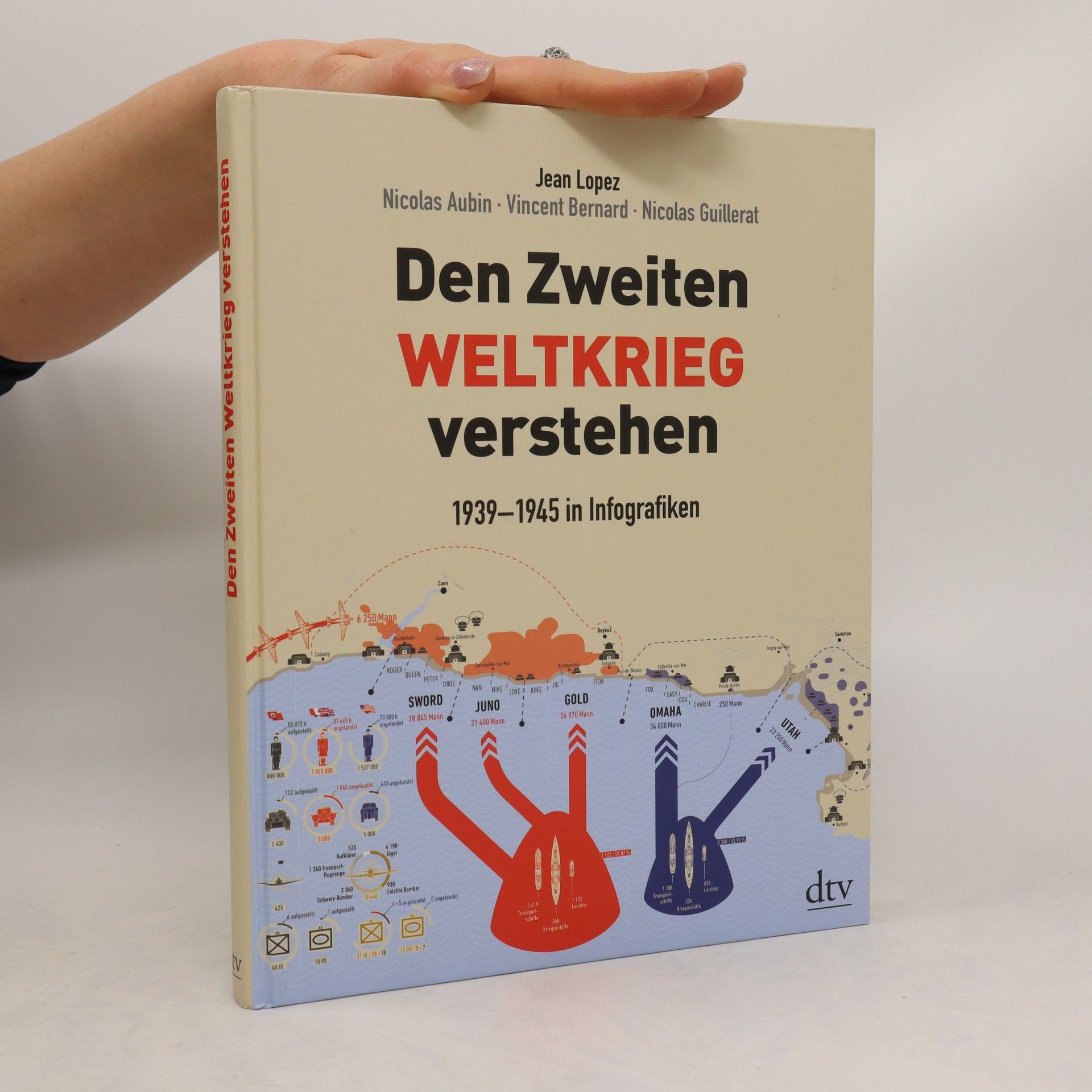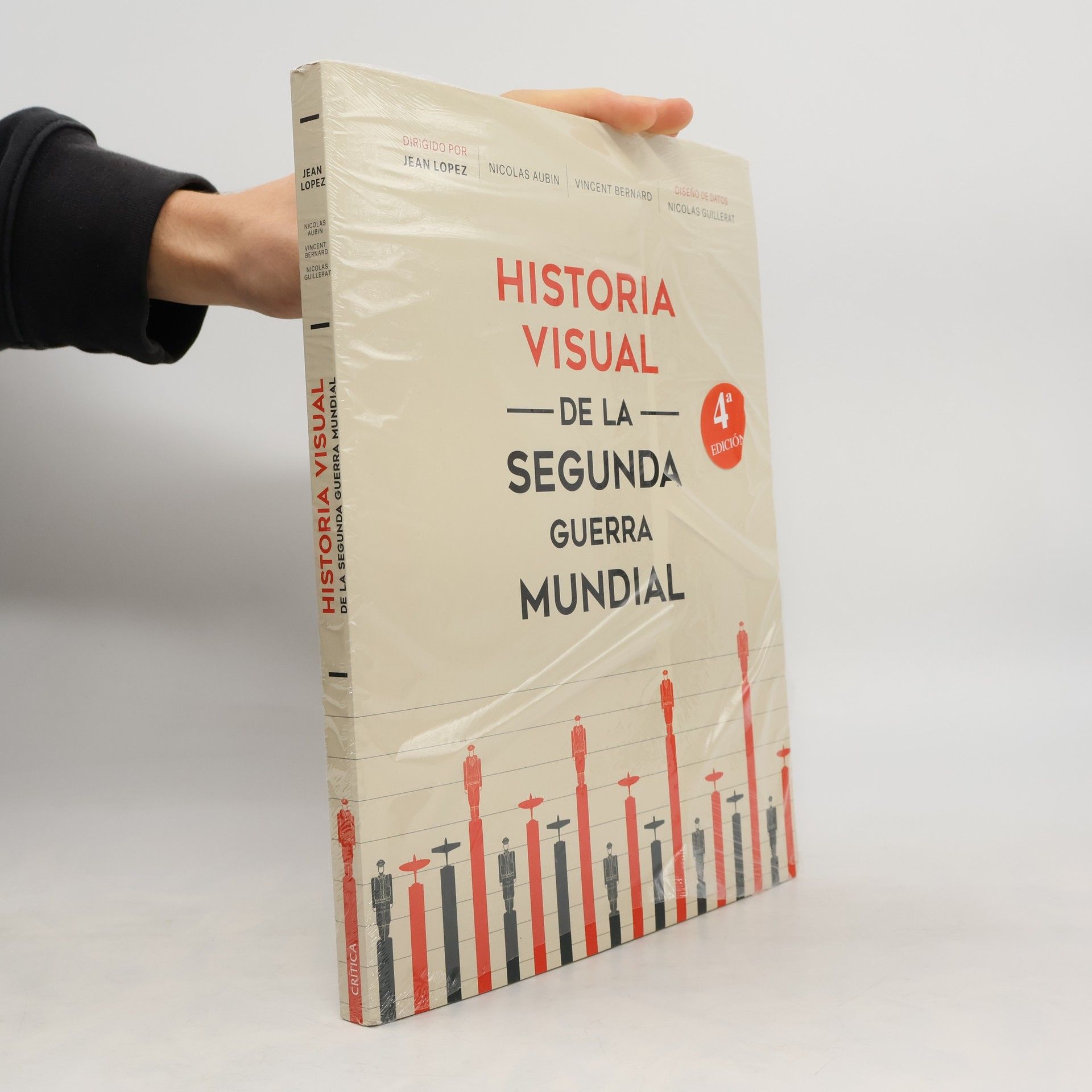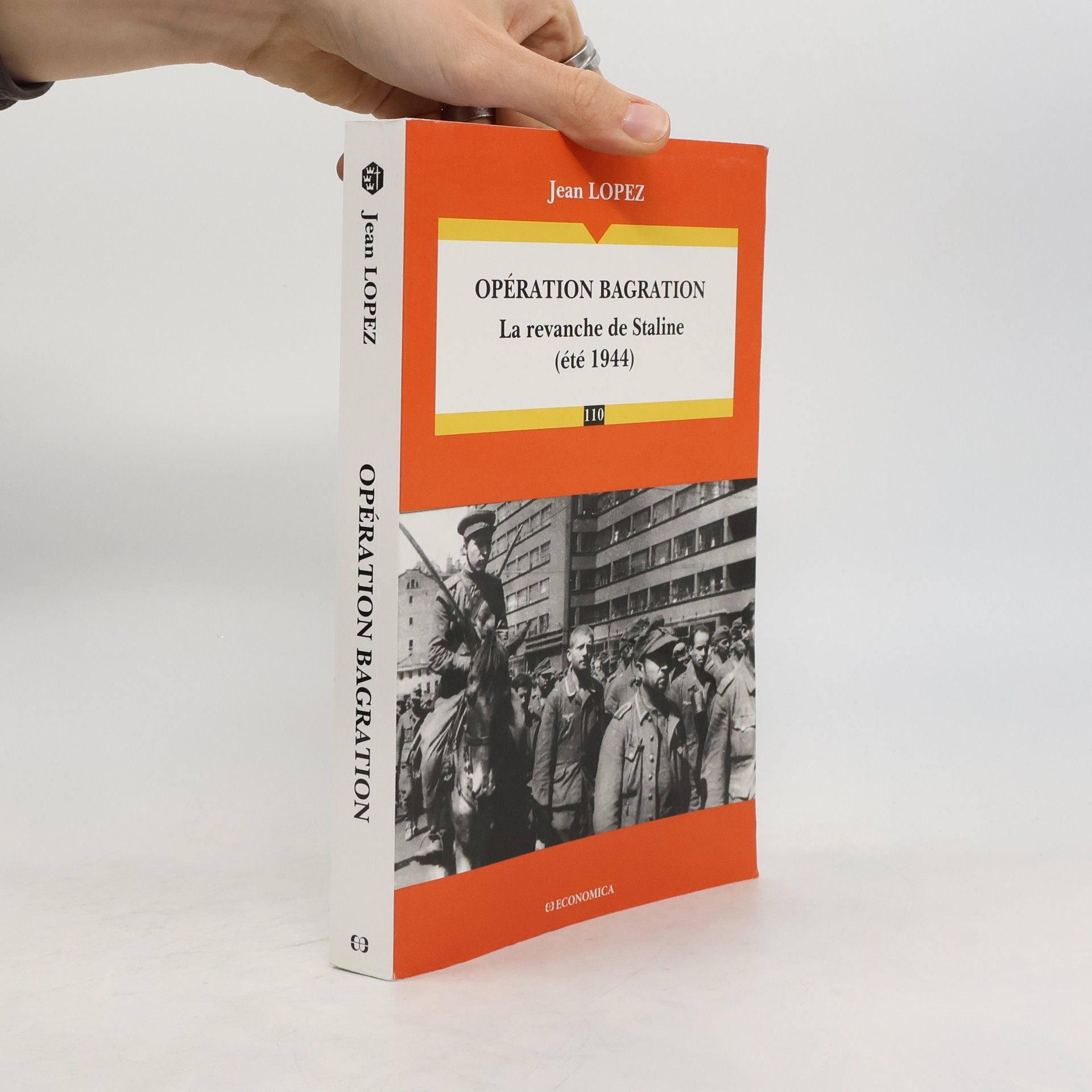Jean Lopez Libros







Normandy
- 464 páginas
- 17 horas de lectura
The Allied landings on the coast of Normandy on June 6, 1944, have assumed legendary status in the annals of World War II. But in overly romanticizing D-day, Wieviorka argues, we have lost sight of the full picture. Normandy offers a balanced, complete account that reveals the successes and weaknesses of the titanic enterprise.
The Resistance in Western Europe is a sweeping analytical history of the underground anti-Nazi forces during World War II. Examining clandestine organizations in Norway, Denmark, the Netherlands, Belgium, France, and Italy, Olivier Wieviorka sheds new light on the factors that shaped the resistance and its place in Anglo-American military strategy.
Den Zweiten Weltkrieg verstehen
1939 - 1945 in Infografiken
Ein neuer Blick auf den Zweiten Weltkrieg Der Zweite Weltkrieg und der Holocaust kosteten 3,5 Prozent der Weltbevölkerung das Leben: 28 Millionen Sowjetbürger, 15 Millionen Chinesen, 8 Millionen Deutsche, 6 Millionen europäische Juden starben. Es war der verheerendste Krieg der Geschichte. Wie konnte es dazu kommen? Wie kann man eine solche Katastrophe begreifen, die jede Vorstellung sprengt? Der Historiker Jean Lopez und sein Team machen die großen Zusammenhänge der Zeit anhand von mehr als 300 Infografiken und Karten verständlich. Anschaulich erklären sie die entscheidenden politischen Entwicklungen und stellen die immensen wirtschaftlichen und industriellen Aufwendungen der Kriegsparteien dar. Sie erörtern Strategien, Waffenentwicklung und Feldzüge. Und sie führen vor Augen, welche Wunden der Krieg Europa und der Welt beibrachte. - Großformat - Durchgehend vierfarbig gestaltet
Mýty druhé světové války
- 408 páginas
- 15 horas de lectura
Znalosti o druhé světové válce se neustále rozšiřují, avšak mnohé mýty přetrvávají, což ukazuje na účinnost válečné propagandy, která i po porážce Německa ovlivňuje názory. Tato kniha se zaměřuje na dvacet tři mylných představ, které jsou stále považovány za pravdivé. Cílem je seznámit čtenáře s novými poznatky a překvapivými objevy, které přinášejí nový pohled na klíčové historické okamžiky. Pod vedením Jeana Lopeze a Oliviera Wieviorky se autoři věnují různým tématům, jako je jednoznačná podpora Churchilla Brity před válkou, nevyhnutelnost porážky v roce 1940, nebo schopnost U-Bootů zvrátit průběh války. Další kapitoly se zabývají například Hitlerovým předstižením Stalina, japonským vítězstvím v Pearl Harboru, Rommelovými velitelskými schopnostmi, či roli železničářů v francouzském odboji. Kniha také zpochybňuje mýty o sovětské ekonomice, Montgomeryho přeceňování, elitě Waffen-SS, a přináší pohled na to, jak Francie přispěla k vítězství Spojenců. Závěrečné kapitoly se dotýkají důvodů porážky Německa a vlivu Hirošimy na japonskou kapitulaci. Překlad z francouzského originálu vydaného nakladatelstvím Perrin. První vydání.
Les grandes erreurs de la Seconde Guerre mondiale
- 320 páginas
- 12 horas de lectura
La 4ème de couv. indique : "La Seconde Guerre mondiale a duré près de six années, aussi longues que terribles. Une durée qui s'explique par les formidables moyens que les belligérants déployèrent sur terre, sur mer et dans les deux - rendant vain d'espérer abattre l'ennemi par une campagne unique -, mais aussi, et pour une large part, par les erreurs commises. Si Hitler ne s'était pas obstiné à gagner la bataille d'Angleterre, si la France, en mai 1940, n'avait pas imprudemment lancé ses forces en Belgique et aux Pays-Bas, si les Anglo-Américains n'avaient pas débarqué en Afrique du Nord... la face de la guerre en eût été changée et sa durée vraisemblablement raccourcie. En traquant les fautes commises par les deux camps, ce livre, sans jamais céder aux vertiges de l'uchronie, vise particulièrement à explorer la rationalité des acteurs. Car les décisions prises par les dirigeants politiques ou les chefs militaires reposaient sur un ensemble de paramètres qu'il importe de décrire, afin de comprendre pourquoi ils menèrent à l'échec. Informations parfois imparfaites, moyens souvent limités, hypothèses par moment fallacieuses ; autant de facteurs qui conduisirent, plus d'une fois, au désastre. Malgré les enjeux colossaux d'une guerre où des millions de vies étaient en jeu, l'orgueil, l'obstination, le carriérisme et l'opportunisme pesèrent également lourdement dans la prise de (mauvaises) décisions. Autant de cas de figures célèbres ou méconnus qu'illustrent, de Stalingrad à « Market Garden », de la stratégie navale des Japonais à l'insurrection de Varsovie, vingt contributions proposées par les meilleurs spécialistes de la Seconde Guerre mondiale. Des chapitres courts et enlevés au service d'une lecture novatrice du conflit."
Le 14 juin 1830, 30 000 soldats français débarquent en Algérie et en entreprennent la conquête. Plus de cent quatre-vingts ans plus tard, les opérations au Mali, de 2013 à 2022, voient intervenir une force qui ressemble à l'armée de 1830 : de petite taille, professionnelle, experte en opérations extérieures, en contre-insurrection comme en contre-terrorisme. Mais l'armée nationale a également été marquée en profondeur par les grands conflits européens du XIXe siècle et surtout les deux guerres mondiales. Montrer les multiples facettes de l'identité militaire française, tel est le sujet central de cet ouvrage fondamental.00En près de soixante articles richement illustrés de photos, dessins, cartes et infographies, il permet au lecteur de parcourir deux siècles d'histoire militaire racontés avec clarté et justesse, à travers non seulement l'histoire des batailles mais aussi celle des troupes, des armes et des doctrines. Comme les deux ouvrages précédents nés de la collaboration de Perrin et de Guerres & Histoire - La Wehrmacht puis La Guerre antique -, L'Armée française est une somme due aux meilleurs historiens réunis sous la direction de Jean Lopez. Propre à séduire tous les publics, ce livre paraît au moment exact où, du fait de la guerre en Ukraine, la France se doit de repenser son armée. Elle aborde ce nouveau chapitre forte d'une tradition qui est probablement la plus riche du monde de par la variété de ses expériences qui l'ont conduite, plus d'une fois, comme l'écrivait le général de Gaulle, à ± des succès achevés ou des malheurs exemplaires ?.0
Nowe, unikatowe spojrzenie na II wojnę światową! Dysponujemy mnóstwem danych na temat tego konfliktu, lecz bardzo trudno je spójnie i zrozumiale przedstawić. Wykorzystując swoją rozległą wiedzę, autorzy wybrali formę infografii, która pozwoliła nie tylko ogarnąć tę obfitość informacji, ale i ukazać je w sposób atrakcyjny i czytelny dla odbiorców. Efekt ich starań jest zdumiewający, zarówno gdy chodzi o metodę przekazywania wiedzy, jej wizualizację, jak i zrozumienie złożonych zjawisk i powiązanie rozmaitych aspektów II wojny światowej. Na II wojnę światową. Infografiki składają się czterech części: „Aspekt materialny i ludzki”, „Broń i armie”, „Kampanie i bitwy” oraz „Bilans strat i zniszczeń”. Opisują one sześćdziesiąt kluczowych tematów – jak problem zaopatrzenia w ropę naftową, struktura związków taktycznych i operacyjnych, operacja „Barbarossa”, logistyka walczących państw, wojna na Pacyfiku, eksploatacja okupowanej Europy, wojna na pustyni… – przedstawiających ten wielki globalny konflikt przystępnie, a zarazem nieszablonowo. Arcydzieło sztuki ilustracyjnej… fantastyczne osiągnięcie i pozycja obowiązkowa na półce każdego miłośnika historii II wojny światowej. - „Militaria & History” Bogato ilustrowane i dogłębnie udokumentowane - nie może zabraknąć tej książki u żadnego entuzjasty historii wojskowości. - „Military History Matters” Pięknie ilustrowana, odmienna od wszystkich innych, prowokująca do myślenia książka o II wojnie światowej, do której będziesz wielokrotnie wracał. - „Eastern Daily Press” Świeże i fascynujące spojrzenie na II wojnę światową – perfekcyjny układ graficzny oraz ilustracje. - „West Read Reviews” Alians historiografii z technikami big data. - Jean-Marc Bastiere, „Le Figaro”
Opération Bagration
La revanche de Staline (été 1944)
A l'été 1944, au cours de l'opération Bagration, l'Armée rouge détruit le Groupe d'armées Centre allemand, celui-là même qui s'était approché à 30 km de Moscou deux ans et demi auparavant. Avec 28 divisions détruites, le Reich encaisse sa pire défaite, qui est aussi la plus lourde de toute l'histoire militaire allemande. Le plan de l'opération Bagration est diaboliquement habile et recèle bien des surprises, stratégiques et tactiques, dont une au moins est mise ici au jour pour la première fois. Les conséquences politiques de l'opération ont été gigantesques. L'attentat contre Hitler, l'insurrection de Varsovie lui sont directement liés. Cet ouvrage analyse en détail le lien qu'entretiennent Bagration et Overlord, le débarquement en Normandie. Il montre comment l'une est la condition du succès de l'autre et comment leur concomitance lance le premier vrai combat de la Guerre froide.

